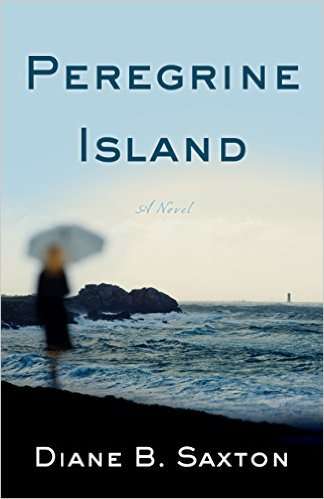Peregrine Island by Diane B. Saxton

Tolstoy said that every unhappy family is unhappy in its own way. Diane B. Saxton, the debut author of Peregrine Island (She Writes Press, August 2, 2016), would probably agree. Her new novel dives into a memorably dysfunctional family, the Peregrines, living on the titular private island on Long Island Sound. Three generations of women live there: Winter, the calculating matriarch, her rebellious adult daughter, Elsie, and her child daughter, Peda. The novel alternates between these three very distinct viewpoints – giving readers the impression of an isolated family wrapped up in years of internal angst. This serves to heighten the sense of mystery when the main story comes into play.
It’s hard to describe what’s going on in Peregrine Island without spoiling it, but long story short, the Peregrines discover that an heirloom painting they’ve kept on display in their house is a lost work of a famously mysterious painter, Simon Crandor, and could be worth millions. The painting is an object of near-obsession for Winter, who almost seems to care more about it than about her daughter and granddaughter (her internal monologue can occasionally be delightfully indifferent to her immediate family). When so-called “art experts” arrive on the island, turning their tiny community upside-down demanding answers about the painting, the true family history of the Peregrines begins to unravel at a breakneck pace.

Author Diane B. Saxton
The art mystery at the center of this story is an elegant device for what appears to be Saxton’s main goal: unpacking the human costs of family secrets. The painting represents years of secrets that the Peregrines have kept, both from themselves and from each other, and the three-generational perspective of their revelations adds depth to what is a truly wild series of surprises. Even though this book is a mystery, Saxton only uses that theme in service to a three-pronged character study into the depths of human love, denial and innocence.
Another standout feature of this novel is the descriptive language of the environment. The brine of the island is almost like another character in the book, and it permeates the fabric of the story. The prim fantasy of living on a private island is juxtaposed with the salty realities of island life through the character of Jake, another, rougher inhabitant of Peregrine Island, in addition to the three heroines’ physical experience of the island itself. An alternately placid and stormy ocean is used throughout the novel to reflect the inner conflicts of the characters, who go through quite a bit of emotional tumult over the course of the plot.
All told, this novel is a strong debut for Saxton, who is formerly a journalist with the Greenwich Review and Vanity Fair UK. It’s not your typical, breezy summer read –- this novel is more uniquely complicated than that, and worth reading for its enjoyably willful refusal to bend to mystery convention.
Author Portrait Courtesy of Elena Seibert
Buy this Book!
Amazon



